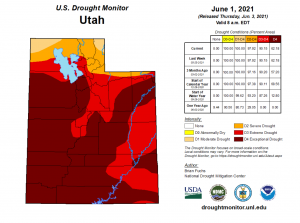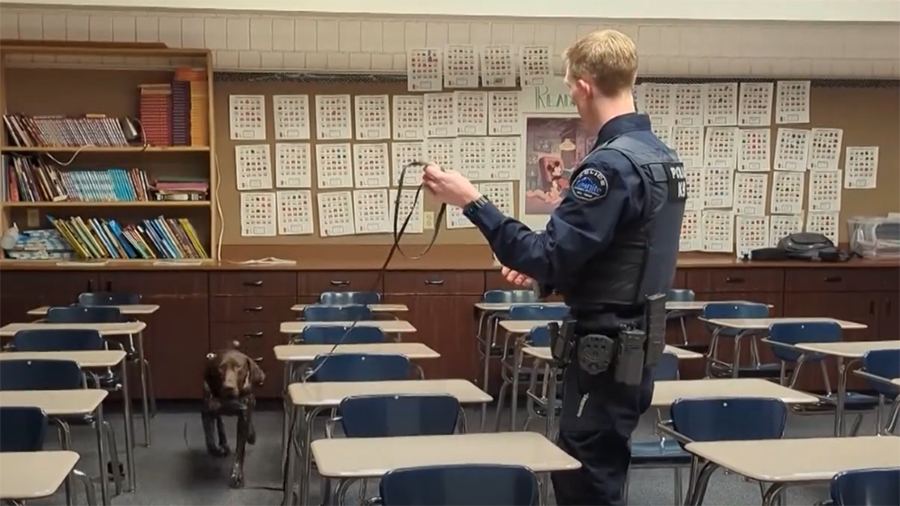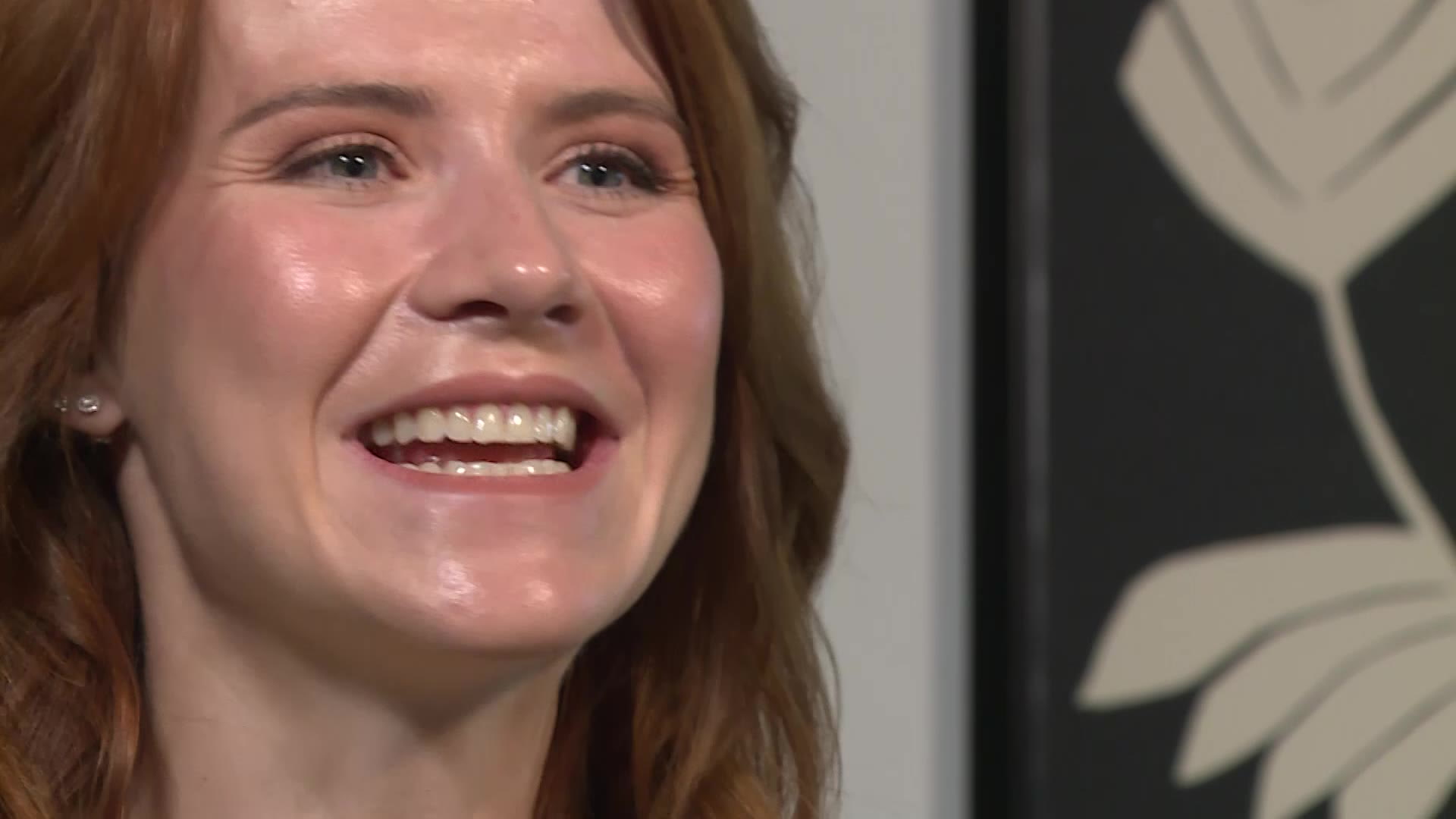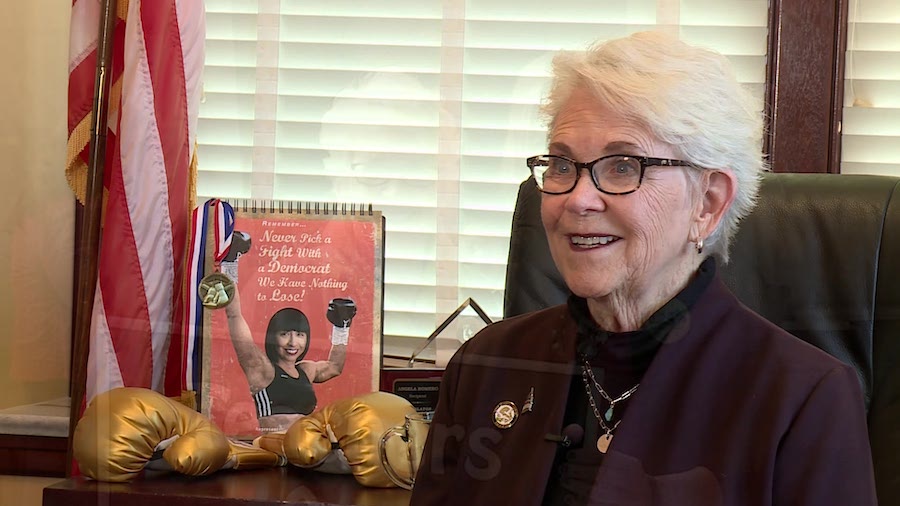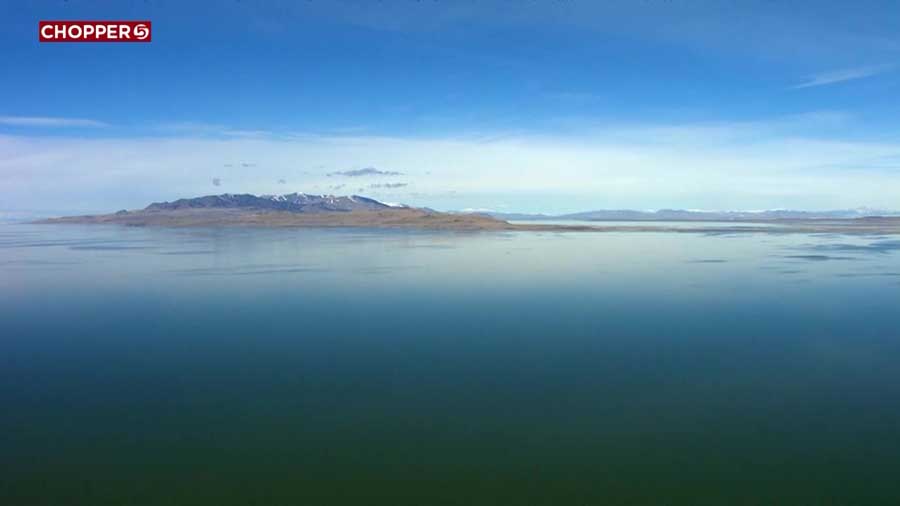KSL+: Severe Drought, How Did We Get Here?
Jun 10, 2021, 10:15 PM
This week on KSL+, we’re talking drought and more particularly, water.
We’ve heard of time and again, over the last couple of months, the western United States are facing a big problem. Currently, more than 50% of the western states are in a drought. And the entire state of Utah is facing drought conditions.
“Let me just say state unequivocally, guys, it’s really bad,” said Governor Spencer Cox in a press conference this week. “We can’t treat this year as any other year. If we don’t conserve earlier, we will have to put heavier restrictions on later.”
2020 was the hottest driest year on record in Utah, since we started recording 126 years ago.
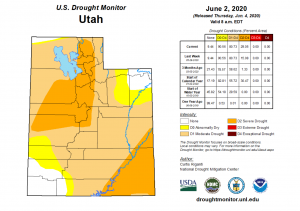
Maps from US Drought Monitor shows differences between Utah’s drought last week and the same time a year ago.
Last year, on June 2nd, 29% of the state was in severe drought. On June 1st this year, 62% of the state is already in exceptional drought, the worst drought levels possible. And it’s of course only June.
An executive order from Governor Spencer Cox this week placed more restrictions on watering and banned fireworks on state lands, including parks and all private property in unincorporated areas of the state. Last week, he asked Utahns to pray for water. We need water. There’s no denying that. But the Utah Rivers Council says there are changes we could be making, and really should have been making for years, to help us better prepare for years like this, when Mother Nature is not cooperating. So I met up with Zachary Frankel with the Utah Rivers Council at one of the canals that goes right through Sandy and likely brings water to many of you listening.
Editor’s note: Interview is lightly edited for clarity and readability.
Matt Rascon: We’re right next to South Towne mall. What are we doing right here? Why did you recommend this spot?
Zachary Frankel: I love bringing people to the spot because it creates all this cognitive dissonance. We are right next to Target and South Towne mall. And here is this massive irrigation canal. This thing’s, I don’t know, 15 feet wide, and it’s full of several feet of water, flowing. And it’s been flowing like this for weeks and weeks. And it’s right in the middle of the city. And I like bringing people here because most Wasatch Front residents, most Utahns in general have no idea that these canals are still here at our doorstep. There are more than 40 canals like this one across the Salt Lake Valley, there’s one quarter mile east of us and about a half a mile west of us. They’re all over the place. And the reason that Utahns need to understand these canals here because they’re symbolic of the inaction and the obstinance and the moneyed interests that have kept us from saving water that have kept us from implementing inexpensive water sources like this to get us through this drought.
Matt Rascon: Where are we when it comes to drought? We’re hearing you know, it could be the worst year for water.
Zachary Frankel: Yeah, so we are in a really bad, long-term drought. And it’s really important that Utahns understand that. So the first thing to understand is that 90% of our water comes from the melting of snow. Okay, we get 85 to 90% of the water we drink, we bathe, we water our alfalfa with, we water our grass outside of our homes and buildings with. 90% of that water comes from the melting of snowpack. Okay, so every winter, our snowpack is crucial. The reason our reservoirs are so low, it’s not because we had one bad winter. It’s because we’ve generally had about 16 bad winners in the last 20 years. In other words, The last 15 or 16 years out of the last two decades have been below average snowpacks. And that’s why we’re really in a drought. This is climate change.
Matt Rascon: And then what does that translate into? I mean, what what do we take away from? Okay, it’s bad. What do we do?
Zachary Frankel: Well, so, so let’s just understand what’s happening, because it’s a profound shift. Yeah, so winter is disappearing. As people talk about climate change, they think about summer. They think, Oh, it’s hotter. And all that’s true. But for our water supply, what really matters is our winter air temperatures, because when we warm up our winter air temperatures, what happens in our mountains where we get our water from in the snow is profound. The other thing that’s happening with winter, as we warm up our wintertime air temperatures is, the bottom of the snowpack is going up the mountains. So if you look up any canyon along the Wasatch Front, or any of the mountains of Utah, what you see in the winter, is that the bottom elevation of that snowpack has risen up the mountain, so less of the whole watershed is covered by snow. That’s a bad deal for us. The way to think about our snow is to think about it like a savings accounts. And we’ve got less money in our savings account, because our snow packs are shrinking. What we need to do is we need to respond, we need to adapt. And the way to adapt is to reduce our water use. We need to reduce our water use and not just inside our homes and inside our bathrooms. We need to reduce our water use outside where we use the majority of our water in Utah. And we’ve been ignoring the need to do that for many, many decades.
Matt Rascon: Yeah, let’s get into that a little bit. Because I know that there are some things about our water use here in Utah that make us a bit unique compared to a lot of other states. For example, you know, metering and, and the costs and things like that.
Zachary Frankel: So there’s a lot we can do. And there’s a lot we can do to save water here in Utah. One of the first things is to use economics to save water. So if we use the power of economics to send a signal to water users in their water bill that this is a precious substance that we need to respect, that we need to not waste, then consumers would respond. I mean, it’s it’s not very complicated to say that consumers respond to the price of a commodity. You know, the reason you get on the freeway, and it’s not full of Ferraris and Porsches is because those cars cost more than Hondas and Toyotas. And so we’re not taking advantage of the basic economics in the water world. We have the cheapest municipal water rates in the entire United States. And it seems like a good deal to have cheap water rates until one looks and realizes they’re paying property taxes on their home, to lower the price of water. Even if they’re renting, they’re paying property taxes to lower the price of water. They’re paying property taxes on their automobile, to lower the price of water. They’re paying sales taxes, four or five different sales taxes in Utah, go to lower the price of water. And then every business we can see here around us is paying a property tax on its business value to lower the price of water. So all of these taxes are why we have the cheapest water in the United States. And of course, why we have the highest per person municipal water in the US.
Matt Rascon: So if I’m hearing right, higher property taxes, there is no money incentive to conserve water, because property taxes kind of cover it. And so no matter how much water I’m using, I’m paying the same amount or it’s still very low.
Zachary Frankel: Right? Right. I mean, think about this way, Rocky Mountain power sells electricity. They don’t have a property tax. If we came to them and said, “Would you like to have a property tax on cars and businesses and and homes?” They would say, “Why would we take a property tax? We pay the entire cost of electricity in the bill.” If we didn’t do that with electricity, people’s electricity usage would go through the roof. There’d be all this huge demand for more electrical power, we’d build more coal fired power plants, or we build more solar or wind. But the reality is, we’re using basic market economics in our electricity bill to lower the price of water. What’s important to understand is that the entities that are are currently collecting the property taxes in water have been employing scores of lobbyists at the State House to keep that property tax in place. And that’s why we use so much water here in our cities.
Matt Rascon: So if we can incentivize people for money reasons, right now, what is the argument to say, we need to cut back, specifically when it comes to secondary water?
Zachary Frankel: So this canal we’re standing on is probably going to a lot of secondary water users. And just so we’re on the same page with the vernacular, secondary means a second source in addition to our primary, potable water source. So the water you have in your home, that you’re washing dishes with, treated culinary water that we drink, that’s our potable primary water supply. This untreated canal water that’s leftover from when this was probably a farm 50 years ago, or 80 years ago, this water gets used to flood irrigate grass, or to be put into a pipe and sprinkled grass with as an outdoor landscape. And it’s an extremely inefficient use of water for a number of reasons. Okay, so number one, this water is not being metered. The users have no idea how much water they’re using. They might throw a pump in there and they might pump the water out. They might have a plumbing system that just just transfers the water to flood irrigate their grass. They might throw a foot of water on their grass, but there’s no meter. You know, when we get our bill for our potable water, we get to know how much water we use for the month. We get a receipt, this is how much you used. These users have no idea how much water they’re using, because it’s unmetered
Matt Rascon: What percentage of Utah is like that?
Zachary Frankel: So Utah has the largest secondary water system in the U.S. Canals, like this one, make up the biggest secondary water system in the entire country. There’s as much water used in the secondary system canals, as is used in the entire Salt Lake Valley in one year. So all the possible water use in the Salt Lake Valley, all the drinking and landscape use from our potable water, all the commercial facilities, all of that equals just the amount of secondary water use from untreated canals like this one. So because those secondary water users don’t know how much water they’re using, they’ve used too much. It’s like an all you can eat buffet. You don’t know how much food you’re eating, especially when you go back for your fourth or fifth plate of food. And the problem is, they’re not paying for their use, in addition to not knowing how much they’re using for the water that they’re flood irrigating with in the secondary systems, or sprinkling in these secondary systems. They’re not paying on a volume basis. It’s again, like an all you can eat buffet. They pay a one time annual fee for all the water they can use. And so the incentive is, I already paid 100 bucks or 200 bucks or 300 bucks for the year, I might as well get as much of it as I can. So they’re not paying per unit volume. And it doesn’t make any sense.
There’s an advertising campaign right now. It is illustrative of the problems we have in Utah. And in that campaign, they talk about how precious water is, they talk about how water is life. They talk about how important water is. And it’s great to have education about how important water is, it’s true. But if we’re not going to incentivize people to save water in their bill, then all we’re really doing is giving it lip service. And we need to do more than give lip service those secondary water users. They need to pay per unit volume. Because you know what? That’s what the rest of America is doing with its water. And that’s why the rest of America is using less water than us.
If you had a kid that you gave $5 or $10 weekly allowance to and he was burning that money in the driveway, you wouldn’t increase his allowance when it comes to you and says, “I’m out of money, I need more.” You say, “Why did you light all that money on fire? You just wasted it.” You’re not really running out of money, you’re just wasting your money. The same is true with water. If we’re going to treat water like it doesn’t matter, and it has no value, are we really going to be surprised when it runs out? If we don’t do something to address the core problems that have been ignored, in the face of decades of criticism of our own water policy, then we don’t really want to save water, we just want to complain. The problem is not going away anytime soon. Drought is here to stay. The new normal is climate change. Colorado River is a good example. Most Wasatch Front residents don’t realize they’re drinking Colorado River water much of the time when they turn their tap on. We get Colorado River water all the way up here to Salt Lake County to Utah County, Juab County. We get Colorado River all throughout the Uintah Basin. And so we’re reliant on Colorado River water. The Colorado River has declined 20% in the last 20 years. You know, if you lost 20% of your income in the last year, you would notice, and you’d probably do something about it because a 20% drop in income is a lot. We’ve lost 20% of our water from the Colorado River. And unlike the sister cities in the Colorado River Basin, unlike Los Angeles and San Diego, Las Vegas, Tucson, Phoenix, Albuquerque and even Denver, which are decades ahead of us in saving water, Utah water leaders are still just burying their head in the sand and talking about lip service when it comes to water. We’re talking about taking shorter showers, which is which is the low hanging fruit when it comes to saving water.
Matt Rascon: But you’re talking about little things like shorter showers not making the dent. And it just it’s it’s superficial. It’s not getting at the root of the problem is what I’m hearing. So what do homeowners take away from this conversation, if the root of the problem is above them?
Zachary Frankel: So here’s the thing. Okay, so I can give you a list of a dozen bills that have been killed here in our Utah State House that have passed in other state houses outside Utah. And the failure in our water policy is that failure of Utahns to demand elected officials who want to reduce wasteful government spending. Wasting water is a waste of a resource. wasting water means more taxpayer spending. The cheapest water to deliver for a water supplier is the water you already own.
So let me give you a couple examples about that. The financial wizards and the millionaire say, the best way to make a million dollars is to save a million dollars, cut out unnecessary spending from your personal budget, and you will be rich. Okay. So we are the most wasteful water user in the country and we’re not implementing basic policies that most of the rest of the country is already implemented. And we’re not demanding from our leaders that they do this for us. We’re focusing on what household residents can do. The best thing that household residents can do to save water is demand fiscal conservativism out of their elected officials, because we’re not getting it because Utahns aren’t demanding. They don’t seem to care. And they’re happy to waste $3 billion on Bear River development at the State House. Unless Utahns demand more, they’re happy to waste $3 billion on the Lake Powell pipeline instead of conserving water, unless Utahns demand more. So that said there are a lot of personal choices we can do as consumers about water use. And I’d like to explore those with you.
But if we just focus on that, we’re going to keep missing the fact that what we’re doing is we’re lighting money on fire in the driveway, instead of putting it into a bank account. And that’s really the core issue.
Let’s go through the numbers. Saving water is just about going through the numbers. So 70% of the water we use in our cities is outside our homes and buildings. So conversely, if we want to save water, the best thing we can can do to save water is looking at how we’re using water outside our homes and offices. Okay, so, first rule, never water concrete. I can’t tell you how often I see water in the gutter or water on the street because somebody is watering concrete. It’s cheap water. So that’s why it gets wasted on cement. So making sure the sprinklers are not watering sidewalks and gutters and roadways and driveways is the first step.
The second step is do not water during the day. So you know the great thing about this is the stomates of plants, the little parts of the cells that suck water in, they open up in the wee morning hours to get the dew that is condensed from the night air. And so if you water in the morning, you get the most efficient use out of watering your landscape whether it’s grass, or whether it’s a garden. The best time to water is 4am to 6am before the sun comes up. Once the sun comes up, the water we use evaporates.
Another problem is watering on a day like today that’s windy. When we water in the wind, the water just evaporates at a higher rate. There’s convection happening because the winds blowing so the water disappears and it takes a lot more water to water the landscape. A lot of people water at midnight, that’s fine, the plants get all night to collect that water. So when we water and how we water our landscapes is the absolute most important thing when it comes to watering. Then we look at landscape choices. Do I really need Kentucky Bluegrass for every square inch of my lot of my yard? There’s a lot of landscapes that you trapse over a lot, you move your garbage cans on, you walk over and they’re hard to keep green. You know, removing grass landscapes that you’re not really going to picnic on is a great way to save water. And so then you can start looking at how you use water. You can shift away from sprinkler systems, you can use drip tubes that drip just a little bit of water only on the plants you want. And you can start looking at replacing some of your grass landscapes with rocks and other attractive substrates. Bark is a popular one, so that you’re not watering anything. And those are great when you’re dragging your trash cans over your yard, then you don’t need to worry about constantly maintaining who’s walking on the grass.
70% of the water we use at our homes is outside but the 30% that we use at our homes is obviously inside. And there’s lots of ways we can save water in our homes. The place to look for water conservation in our homes, is to look how we use water in our bathrooms. Most of the water in our homes is used in our bathrooms. So low flow showerheads are a great way to go. There’s the full spectrum of quality. You can get really good low flow showerheads, that feels like a lot of water, you don’t have to sacrifice having a nice shower. What you want to look for when you go to your big box home improvement store is look for the water smart label, or WaterSense.
Matt Rascon: We hear agriculture is taking up a bunch of water. So are we really going to be able to do something if they’re using most of it anyway?
Zachary Frankel: Agriculture uses 85% of the water in Utah, the single largest share, and somewhere around half of that water use is for alfalfa hay, or more. So about half the water we use in Utah is for alfalfa hay. The challenge with agriculture and our hard working farmers is that they don’t have any capital to make better use of their water without assistance from the state. We could invest taxpayer funding into lining canals like this one, so that the water isn’t seeping into the ground. A lot of the agricultural water use in Utah is dirt canals that were constructed in the 19th century, that are still diverting rivers and tons of water is just seeping right into the ground.
One of the things to understand about the water in Utah is that as we grow as a population, we actually create more water for our municipal supply. Again, this landscape demonstrates it. This canal that we’re standing next to, 100 years ago was probably a farm. It was probably all farming landscape around us. But you can see now it’s been converted to a shopping mall and parking lots. And there’s almost no water use occurring on this acreage. We’re not watering our parking lots, and the customers that are going into Barnes and Noble and Old Navy and Target and all these stores, they’re not going in there and using any water. Even if they go and use the bathrooms or have a glass of water, the amount of water being used on this landscape is a teeny little pittance compared to how much water was used when this was 100 acres of alfalfa. The reason that matters is because we’re creating a surplus of water. And if you go to KSL Classifieds, and you click on “other real estate”, you will see a category called “water rights”. And I looked on it yesterday, and there were eight pages of water rights for sale. What are those water rights for sale? Those water rights are canals like this one where someone wants to sell the water. And once again, we’re ignoring this as a water source. If we lined this canal or we put it in a pipe, and we converted that water to municipal use, it was treated, potable, that primary water source, then we can use it in our homes indoor and outdoor. And that’s what we’re trying to do at Utah Rivers Council. We’re trying to broaden the conversation to consider other water sources. You know, in Las Vegas, if you water the concrete and you water a gutter, a water cop will show up at your house and give you a citation. If that happens here in the Salt Lake Valley, that means it’s Tuesday.
Matt Rascon: Okay, you touched on zeroscaping before, you touched on your own lawn. There are other things though about it, you know, HOA rules and other things that kind of makes it difficult to even have a lawn a yard where you don’t have to use as much water.
Zachary Frankel: Yeah, landscape ordinances can be a major problem in cities across Utah. And these are ordinances on the books, that cities require homeowners to have a minimum coverage of grass and they’re crazy. But if we’re not going to save water, let’s just be honest about it. Let’s just say that water conservation sucks. And we don’t want to save water. We’re committed to costly and expensive government spending in the water sector and we just don’t care. But if we care, and if we really want to be fiscally conservative, we need to embrace water conservation policies and programs. And we need to be honest with the fact that there are moneyed interests, special interests in our state house that want us to spend more money just because they have the lobbying power.
This is a story of course that isn’t going away anytime soon. So you can follow along with all the latest developments on KSL TV, and KSLtvcom. For now. That’s it. We’ll see you next week.

